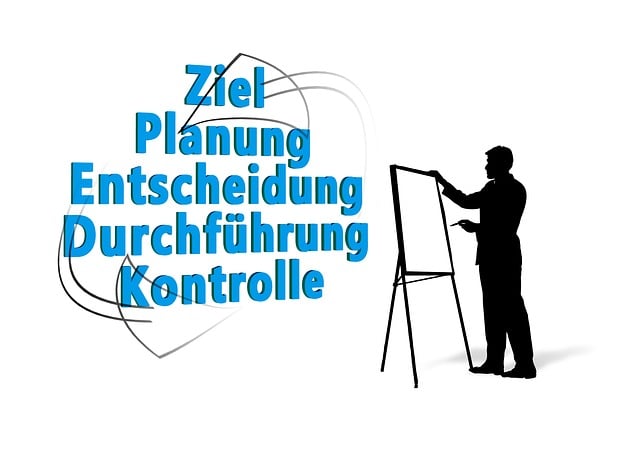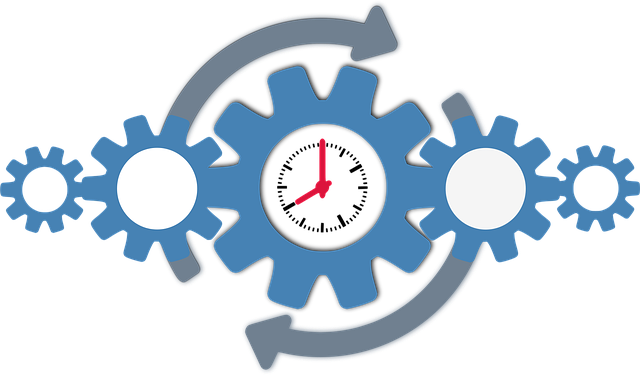5S training, rooted in lean management, is a 5-step framework for workplace organization: Sort, Set in Order, Shine (Clean), Standardize, Sustain. This method boosts productivity, reduces errors, and enhances job satisfaction by eliminating clutter, streamlining processes, and fostering continuous improvement through visual cues and process standardization.
Visual workplace methodology is a powerful approach that transforms work spaces into efficient, well-organized environments. This article delves into essential practices like understanding the 5S Training Framework, applying Lean Management Principles, and implementing effective workplace organization strategies. We explore how continuous improvement through 5S and standardizing processes can drive operational efficiency. By combining these techniques, organizations can optimize productivity, enhance quality, and foster a culture of constant enhancement.
- Understanding the 5S Training Framework
- Applying Lean Management Principles
- Strategies for Effective Workplace Organization
- Continuous Improvement through 5S
- Standardizing Processes for Efficiency
Understanding the 5S Training Framework

The 5S Training Framework is a powerful tool in lean management and workplace organization, offering a structured approach to enhancing efficiency and productivity. It consists of five simple yet profound steps: Sort, Set in Order, Shine (Clean), Standardize, and Sustain. This methodology encourages employees to actively participate in their work environment’s transformation by eliminating clutter and streamlining processes.
By ‘Sort’, the initial step, items are categorized and separated into essential and non-essential groups, facilitating easier management. ‘Set in Order’ involves organizing these items logically, ensuring everything has its place. ‘Shine’ (Clean) promotes a tidy, sanitized workspace, improving safety and morale. ‘Standardize’ focuses on process standardization, creating clear guidelines for tasks to ensure consistency and efficiency. Finally, ‘Sustain’ emphasizes continuous improvement, where the organization ensures the 5S principles become ingrained in the company culture, fostering an environment of ongoing enhancement.
Applying Lean Management Principles

The application of Lean Management principles is a cornerstone of the Visual Workplace methodology. By integrating concepts like 5S training, organizations can transform their workspace organization and streamline processes. The 5S method—Sort, Set in Order, Shine (Clean), Standardize, Sustain—serves as a powerful framework for continuous improvement. This involves systematically removing waste, organizing tools and equipment, maintaining high cleanliness standards, and establishing consistent work procedures through process standardization.
Lean management encourages workers to identify and eliminate non-value-added activities, enhancing overall efficiency. Visual cues play a crucial role in this process by making the workplace more intuitive, reducing confusion, and enabling employees to quickly recognize issues or inefficiencies. This visual organization translates into improved productivity, reduced errors, and enhanced job satisfaction, fostering an environment conducive to sustained 5S continuous improvement.
Strategies for Effective Workplace Organization

Implementing effective strategies for workplace organization is essential for maximizing productivity and creating a visually appealing environment. The 5S training methodology is a powerful tool that can transform any workspace. This system, rooted in lean management principles, involves sorting, setting in order, shining (cleaning), standardizing, and sustaining. By teaching employees these simple steps, organizations can achieve remarkable results in terms of both efficiency and aesthetics.
Process standardization plays a pivotal role in maintaining an organized workplace. Defining clear procedures for everyday tasks ensures consistency and reduces waste. Visual cues, such as color-coding and well-labeled storage areas, facilitate easy identification of tools and materials, further enhancing productivity. Continuously improving these practices through ongoing 5S continuous improvement initiatives keeps the workspace optimized, fostering a culture of efficiency and order.
Continuous Improvement through 5S

In the realm of lean management and workplace organization, Continuous Improvement through 5S stands as a game-changer. This powerful methodology, rooted in Japanese production systems, transforms workplaces by implementing five fundamental principles: Sort, Set in Order, Shine (Clean), Standardize, and Sustain. Effective 5S training isn’t just about learning steps; it’s about fostering a culture of process standardization where every employee understands their role in maintaining an organized, efficient workspace. By continuously applying these principles, organizations can achieve remarkable results in terms of increased productivity, reduced waste, and enhanced quality.
The heart of 5S continuous improvement lies in its ability to drive process standardization across the board. Through sorting items that are not value-added, setting clear standards for workflow, shining (cleaning) up the workplace to eliminate visual clutter, standardizing procedures, and sustaining these practices through regular audits, organizations can streamline their operations. This systematic approach ensures consistency, enabling teams to work smarter, not harder. As a result, workplaces become more efficient, mistakes are reduced, and overall productivity gains are significant, solidifying 5S as an indispensable tool in any organization seeking lean management excellence.
Standardizing Processes for Efficiency

In any workplace, efficiency is key to achieving high productivity and quality standards. Visual workplace methodology introduces a powerful tool for achieving this through process standardization, focusing on the 5S principles: Sort, Set in Order, Shine (Clean), Standardize, and Sustain. Implementing 5S training fosters a culture of order and organization, where every item has its designated place, streamlining workflows significantly. This lean management approach ensures that tasks are performed systematically, minimizing waste and maximizing productivity.
Process standardization is not a one-time event but an ongoing 5S continuous improvement process. It involves regularly reviewing and refining work processes to eliminate inefficiencies, reduce errors, and enhance overall workplace organization. By standardizing procedures, teams can achieve remarkable efficiency gains, making it easier to train new employees and maintain consistent quality standards. This approach aligns perfectly with the broader goals of lean management, aiming for a balanced and optimized production system.
